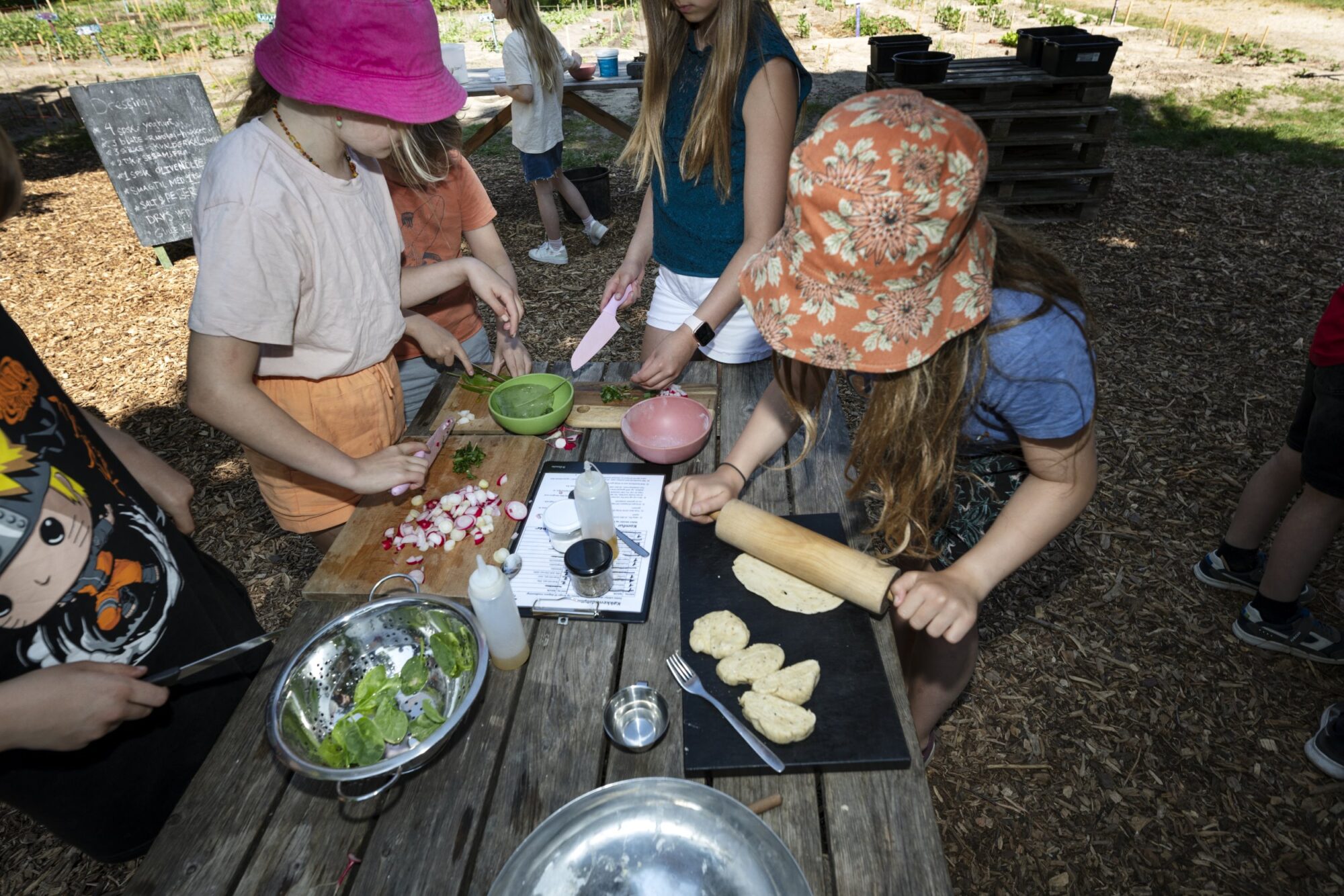Where does food come from? And how does food relate to nature? The initiative ‘Gardens for Stomachs’ works to instill the connection between food and nature in children by teaching them how to cultivate on their own. It’s a hands-on and practical education that creates communities across the country.
Gardens for Stomachs is not just a simple project, nor is it merely a school garden; it’s an educational offer that aims at helping children understand the connection between nature and the food they eat. The association establishes an equality between nature and humans, city and countryside, and movement and condition. By cultivating the soil, children gain important knowledge and life skills pedagogically. According to Gardens for Stomachs, it’s about “cultivating life, experiencing the world, and learning in harmony with the planet and each other.”

The association was founded in 2006 by chef Søren Ejlersen, the founder of Aarstiderne (organic meal boxes), as a non-profit organization and a modern interpretation of traditional school gardens at Krogerup Avlsgaard in Humlebæk, Denmark. The idea emerged as part of Aarstiderne’s vision to restore the connection between cultivation and meals, and the concept of bringing the earth and table closer together – from garden to stomach.
The nationwide school garden association has the ambition that all municipalities in the country will have school gardens by 2030, enabling all children regardless of ethnicity, age, and gender to learn how to cultivate from soil to table.


Gardens for Stomachs 2030 ambitions include:
- Creating hands-on education that promotes positive child communities, where children learn how food functions from soil to table.
- The children form relationships with professionals, such as gardeners, teachers, and pedagogues, and explore potential career paths within vocational education and training.
- Using Gardens for Stomachs green learning environments to foster understanding and familiarity with climate challenges and solutions, strengthening children’s ability to act towards green transformation.
- Preventing obesity by focusing on physical activity, cooking skills, and healthy meals
- Providing a safe space free from criticism, expectations, grades, and rigid roles.

Facts:
The first school garden in Denmark was established in Melby near Kalundborg in 1903. The following year, ‘Copenhagen School Gardens’ was founded, and the first Copenhagen school garden was created on Kløvermarksvej in Amager. The new Copenhagen school gardens aimed to ensure that children living in the city’s overcrowded apartments received plenty of fresh air and exercise.
aldania.dk/projekter/haver-til-maver
https://skoven-i-skolen.dk/viden-om-udeskole/haver-til-maver
